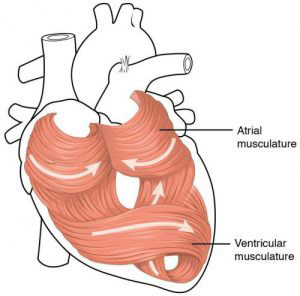As you may already know, cardiovascular disease (CVD) is the leading cause of death in the United States and globally, contributing to more than 17 million deaths each year (1). Fortunately, the signs and symptoms of CVD are not hard to spot; however, it can be difficult to detect signs of the disease in their early stages. To make sure your heart health stays strong and that you stay well ahead of any CVD risk factors, schedule an appointment with Cardiac CT in Alamogordo Radiology today!
Table of Contents
What is CTA or Cardiac Catheterization?
CTA or cardiac catheterization is a diagnostic procedure used to visualize the coronary arteries. It is performed by threading a catheter through the femoral artery in the groin up to the heart. Once in place, dye is injected into the coronary arteries and images are taken. The images are then used to diagnose coronary artery disease.
2) Why Are Cardiac CT Scans Performed?
Cardiac computed tomography (CT) is a test that uses X-rays and a computer to create detailed pictures of your heart. A cardiac CT scan can be used to:
-Detect and diagnose coronary artery disease
-Evaluate the severity of coronary artery disease
-Detect and diagnose heart valve problems
-Detect and diagnose certain congenital heart defects
-Guide doctors during certain heart procedures, such as angioplasty or stenting
3) How Do I Prepare For My Scan?
If your doctor has scheduled you for a cardiac CT scan, it’s important to prepare for the test so that the results are as accurate as possible. There are a few things you can do to ensure an accurate scan:
- Drink plenty of water the day before and the day of your scan. This will help keep your arteries hydrated and dilated, making them easier to see on the scan.
- Avoid caffeine and alcohol before your scan. These can cause dehydration and constrict blood vessels, making it more difficult to get an accurate picture.
- Eat a light meal before your scan. A heavy meal can cause indigestion, which can make it difficult to lie still during the exam.
- Wear loose, comfortable clothing.
4) How Is A CTA Scan Performed?
A CTA scan is a non-invasive, painless medical test that uses X-rays and computer technology to produce three-dimensional (3D) images of the heart and its blood vessels. The test is performed by injecting a contrast agent into the patient’s arm through an IV, which allows the arteries to be seen more clearly on the images. The patient then lies on a table while the X-ray machine rotates around them, taking pictures of the heart from different angles. The images are then sent to a computer for reconstruction, and the final 3D image is produced.
5) What Can I Expect After A CTA Scan?
After your CTA scan, the technologist will review the images with a radiologist. The radiologist will then send a report to your doctor. Your doctor will go over the results of the scan with you and explain what they mean. If your coronary arteries are healthy, you probably won’t need any further treatment. However, if the scan shows that you have coronary artery disease, your doctor may recommend additional tests or treatments.
6) What Will The Results Show Me?
Coronary Artery Disease (CAD) is the leading cause of death in the United States. Luckily, there is a non-invasive way to screen for CAD at the Heart Center of New Mexico in Alamogordo. A cardiac CT scan uses special x-ray equipment to take clear pictures of your heart and arteries. The results of your scan will show the doctor if you have CAD and how severe it is. This information is important because it can help your doctor choose the best treatment for you.
If you have CAD, the goal of treatment is to improve blood flow to your heart muscle by widening or bypassing blocked arteries.
7) When Do I Need To Call 911 After A CTA Scan?
A CTA scan is an imaging test that uses X-rays and computer technology to create pictures of your coronary arteries. The test can show if you have plaque buildup or narrowing of your arteries. Plaque is made up of fat, cholesterol, calcium, and other substances found in the blood. Narrowing of the arteries is called stenosis. It happens when plaque buildup narrows the artery and reduces blood flow.
8) Who Should I Contact For Further Information About A CTA Scan?
Coronary artery disease (CAD) is the leading cause of death in the United States. CAD occurs when the arteries that supply blood to the heart muscle become blocked. A CTA scan is a non-invasive test that can detect CAD. The test is performed by injecting contrast material into a vein and then acquiring images of the heart. A CTA scan can also be used to assess the severity of CAD and to determine the best treatment options. If you are interested in having a CTA scan, please contact your doctor or cardiologist.

